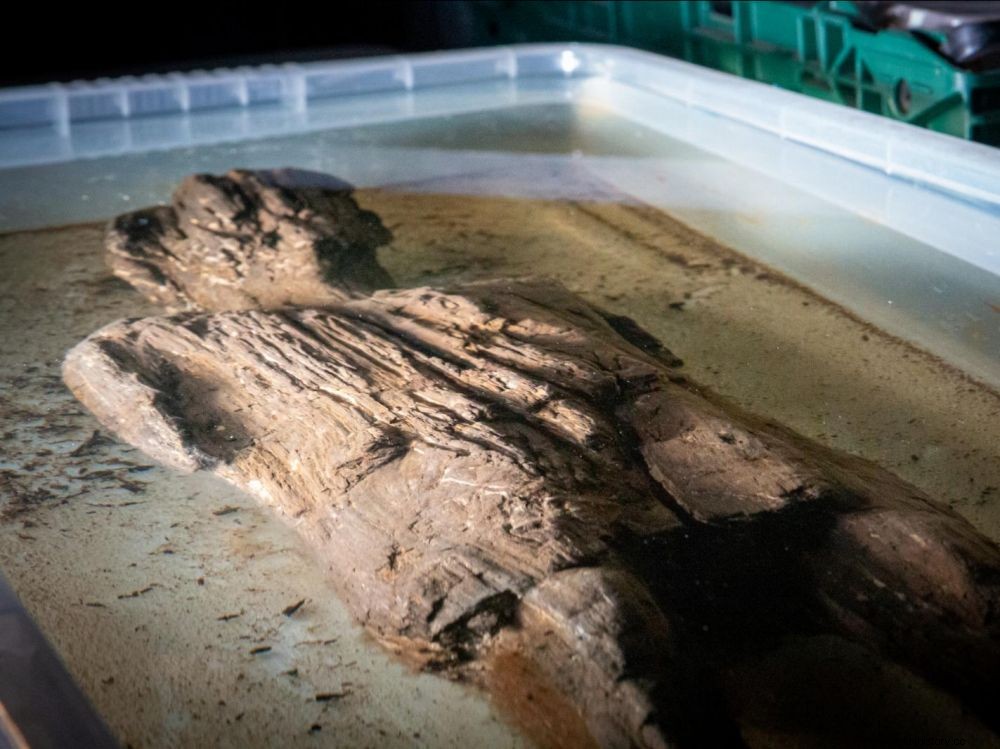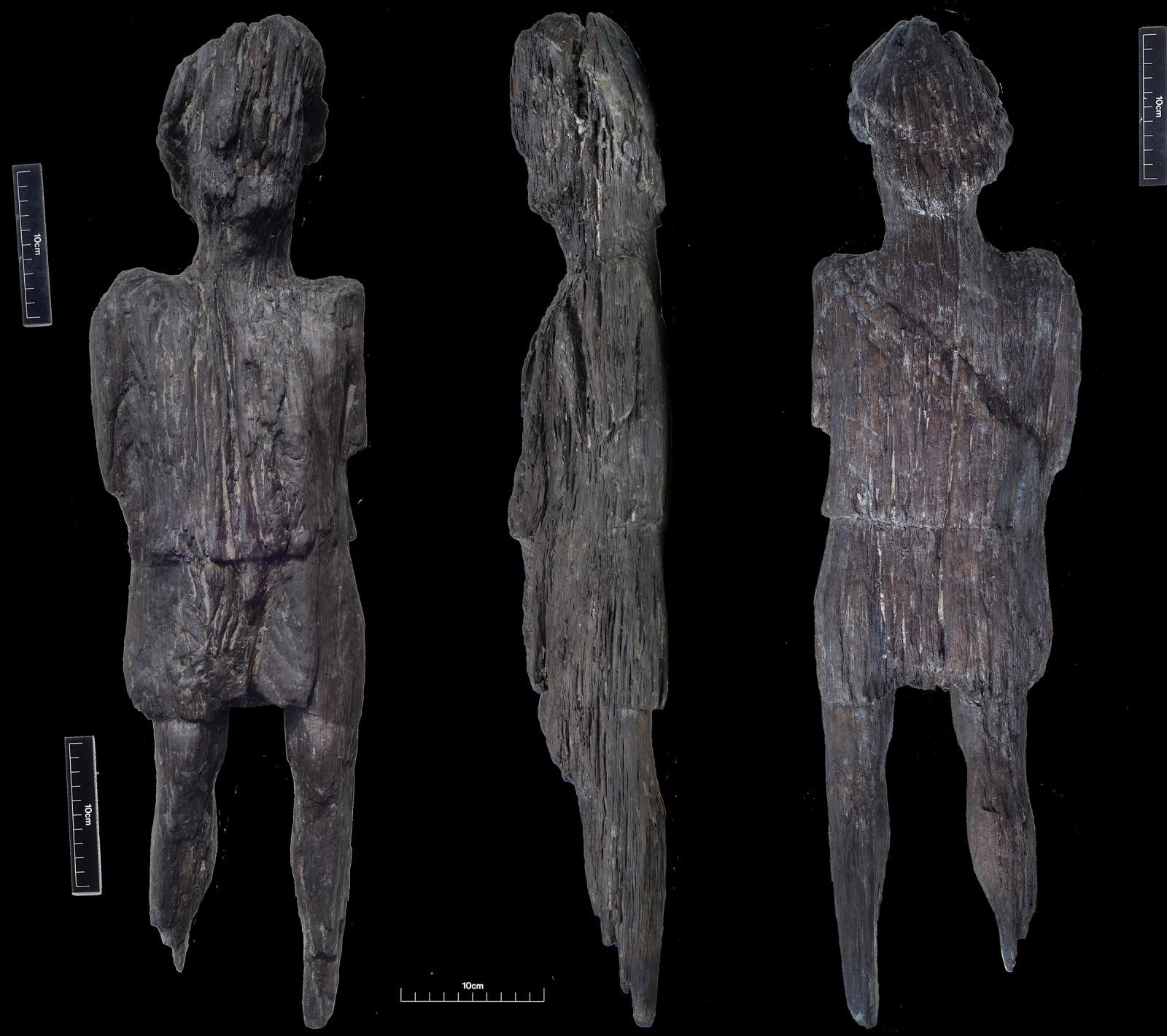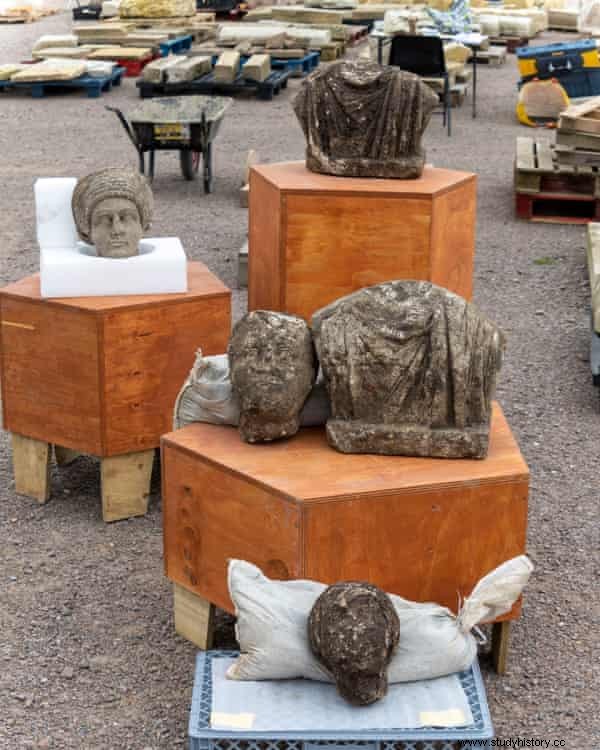A very rare wooden sculpture dating from Roman times has just been found in the London outback. A treasure that adds to the long list of discoveries made in recent years on the huge construction site of a new high-speed train line, the HS2.

The wooden statue, carved from a single piece of wood, is 67 cm high and 18 cm wide.
An "incredible" carved wooden figure, believed to date back to early Roman times, has been unearthed in a waterlogged ditch in Buckinghamshire, a county in southeast England. It is the latest discovery made during the largest campaign of preventive archaeological excavations ever organized in the United Kingdom, within the framework of the construction of a railway line which will link London to Birmingham from here the end of the decade.
67 centimeters high and carved from a single piece of wood, it represents a figure dressed in a draped coat reaching mid-thigh, probably a tunic. The man or woman may be wearing a hat or combed hair, and show well-defined legs, even if these are damaged from the calves down.
Archaeological rarity
According to a first estimate made from its style, it dates from the beginning of the Roman period on English territory. An estimate that seems to be confirmed by shards of pottery discovered in the same ditch and dating from 43 to 70 AD. It could be an offering to the gods, other pieces of wood having been used this way at the same time. So maybe she wasn't randomly thrown into the ditch:she might have been placed there deliberately.
 Credits:HS2/PA
Credits:HS2/PA
Wooden pieces dating back to the Roman period are rare, even more so in English territory which, for nearly four centuries (from 43 AD and until 410), was a province of Empire bearing the name of "Brittany". This organic material does indeed keep very badly, especially in a humid environment like the English hinterland. Thus, the discovery of an antique wooden object is always exceptional. In this case, the sculpture benefited from the lack of oxygen in the ditch:this stopped the rotting of the artifact for centuries, much like underwater wrecks.
"This is a truly remarkable find that brings us face to face with our past. The quality of the carving is exquisite and the figure is all the more exciting as organic objects from this period rarely survive" , said Jim Williams, senior science adviser for Historic England, to the Guardian . The figure, which will soon be analyzed, should be radio-dated with carbon 14 from one of its fragments found detached from the figure.
The HS2 line, a "treasure chest"
Since 2018 and the start of work on the HS2 line - the one that will run the "fastest in Europe train " (360 km/h at commercial speed) by 2029 to 2033 - many extraordinary finds have been made by the teams responsible for ensuring that the site does not damage previously unknown remains. More than 1,000 archaeologists are working on at least 60 separate sites along the route of the line.
For experts, this is a unique opportunity to excavate a huge portion of the territory covering more than 10,000 years of history. As in France, archaeological research in the UK is a legally binding condition of major land-use planning projects. And even if such infrastructure projects always pose a risk of damaging a part of the heritage hidden underground for centuries, even millennia, they are also, very often, the only way to finance excavations in places that do not would never have been surveyed otherwise.
Roman city and Renaissance gardens
In the case of HS2, precautions were taken even before the first excavator hit:the route was first mapped by laser scanning and geophysical studies were carried out to prepare for the excavations. Among the finds, which range from the Iron Age to the Victorian era, include a trio of Roman statues in an abandoned medieval church in Buckinghamshire, tens of thousands of skeletons in various cemeteries, 16th century gardens in Warwickshire or the oldest railway roundhouse in the world in Birmingham.

The trio of Roman statues. Credits:HS2/PA
But surely the most impressive find remains that, announced only a few days ago, of a wealthy Roman trading city whose inhabitants adorned themselves with jewels and used delicate pottery on a daily basis. Buried beneath a secluded Northamptonshire field, it still features an impressive 10m wide road, domestic and industrial buildings, over 300 coins and at least four wells. For more than a year, no less than 80 archaeologists have been working there.
While most of the unearthed remains will end up in museums, others will not experience this fate. This is the case of this famous road, impossible to move and which, under the pressure of machines designed to turn over stones and earth, will have to give up its place occupied for so many years to another route, this time ultra-fast. As Helen Wass, Head of Heritage at HS2, also quoted by the Guardian :"Archaeology is a double-edged sword. We wouldn't be doing archeology if construction didn't happen. You can't have one without the other."
